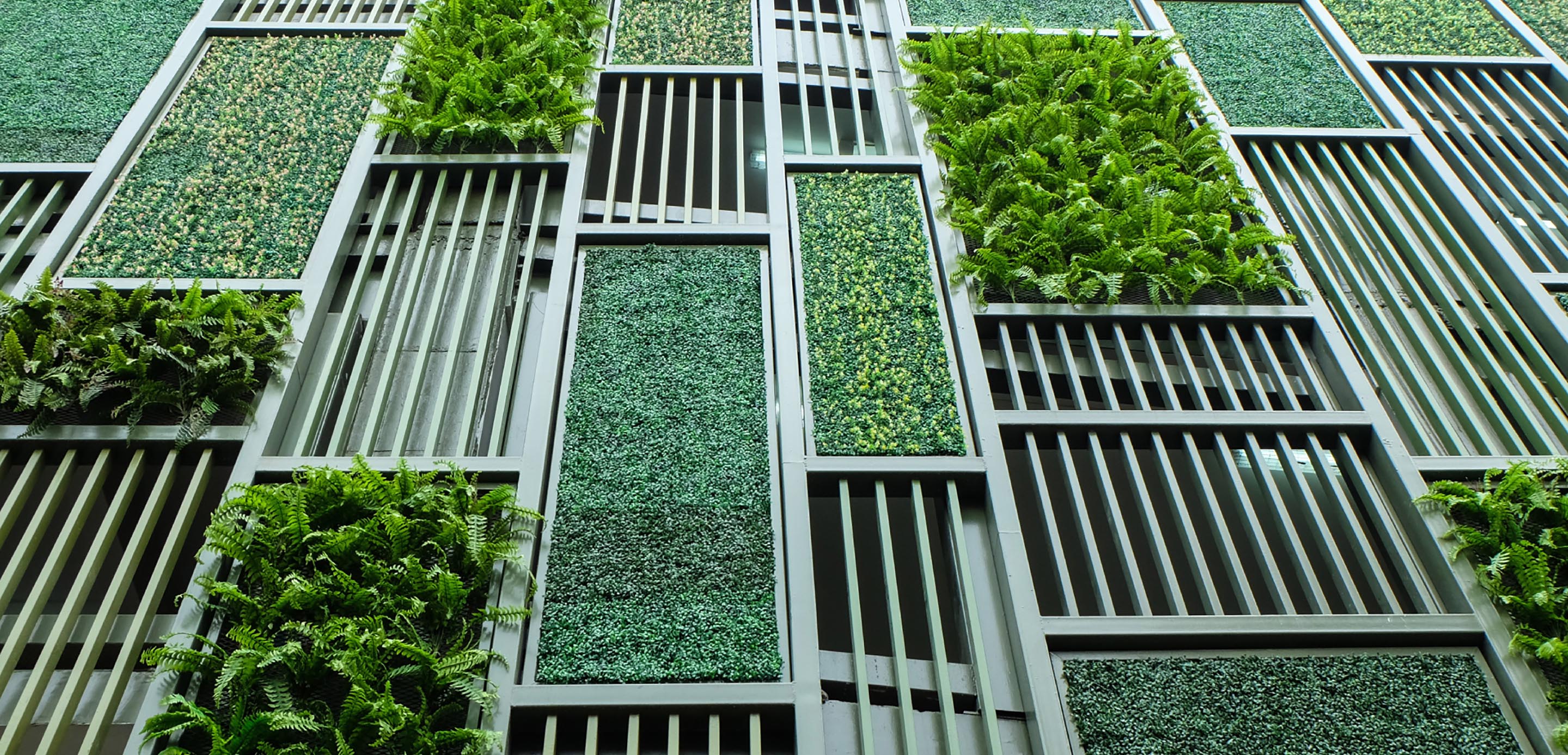- Article

- Sustainability
- Understanding ESG
- General Sustainability
Sustainable Buildings and Construction
Innovation, investment and data are at the forefront of efforts to reduce the sector’s emissions
As economies across the world recover from COVID-19, construction volumes are expected to increase globally by an average of 3.2 percent a year, according to the Global Construction 2030 report by research firm Databased Analysis.1
The report estimates that the value of global construction output will increase to USD14.8 trillion in 2030 from USD11.6 trillion in 2020, with China remaining the largest construction market.
As part of HSBC’s Living Business MENAT 2021 programme, a panel of industry leaders and academics discussed environmental, social and governance challenges and potential solutions within the construction industry.
Focus on sustainable construction
“Significant attention and investment are now being directed at creating more sustainable buildings,” says Priyanthini McNair, HSBC’s Regional Head of Client Coverage for the Middle East, North Africa and Türkiye.
“The pace of change needs to accelerate, with more innovative approaches to building technologies, more funding for retrofits and a greater focus on sustainable construction,” she says.
About 40 percent of global energy-related greenhouse gas emissions comes from building construction and operation.
About 40 percent of global energy-related greenhouse gas emissions comes from building construction and operation, according to the Global Alliance for Building and Construction.2
This is expected to reach 70 percent by 2050, mainly due to an increase in electricity and water demand, the International Renewable Energy Agency estimates.3
“Banks have a big role to play in terms of accelerating this agenda,” McNair adds. “The ability to come up with financing solutions that can help companies and partners, and even regulators, take this step forward is going to be critical.”
HSBC is a key player in sustainable finance and has funded, facilitated and invested USD49.7 billion in clean energy and low-carbon projects globally since Q3 2019.
Data a key enabler
To manage environmental impact on construction sites, collecting and tracking data is crucial, according to Tushant Suri, Senior Sustainability Manager at Multiplex - a global construction company.
Data from its UAE construction sites showed that Multiplex was spending up to AED35 million (USD9.5 million) a year on diesel for its on-site power generators, producing a massive carbon footprint of 16,000 tonnes a year.
That is the equivalent of greenhouse gas emissions from 3,480 passenger vehicles driven for one year, according to a calculator created by the United States Environmental Protection Agency (EPA).4
As a result, the company started integrating multiple technologies at its construction sites, including using more efficient hybrid power generators running on biodiesel, as well as installing solar photovoltaic panels.
Contractors need to start tracking data beyond regular certification requirements, while green building councils and industry players must support data aggregating tools, the experts agreed.
“By aggregating data, a close-loop of information and innovation can be applied and integrated with lots of people across the value chain,” says Hamoda Youssef, Head of Technical Affairs at Qatar Green Building Council.
Cradle-to-cradle design
Using a cradle-to-cradle concept in building design and materials is another way to make construction sites greener.
Developed in the 1990s, the concept’s goal is to reduce damage to the environment by selecting reusable construction materials such as wood, rather than concrete, a major contributor to carbon emissions globally.
“We need to give serious thought to why we need to use concrete and how much concrete is required in a building,” says Dr. Anas Bataw, Director at the Center of Excellence in Smart Construction in Dubai.
Cement is the source of about 8 percent of the world's carbon dioxide emissions, according to think tank Chatham House.5
While replacing concrete might be difficult in many projects, adjusting additives in the mix or extending the curing time to reduce the amount of cement - the main carbon culprit - are just some of several ways forward.
One cutting-edge technology being explored by the industry is carbon absorption from the air by the concrete structure.
In a recent project at the Royal Grammar School Guildford Dubai, the first net zero energy school in the MENA region, Multiplex was able to reduce embodied carbon by up to 30 percent.
Cutting-edge design methods
Builders can also adopt Design for Manufacture and Assembly (DfMA) or 3D printing, both of which can significantly reduce construction waste.
DfMA, or offsite prefabrication of building modules, offers more efficient use of materials and a lower carbon footprint6 - this approach was used in the construction of Dubai Opera and Dubai Mall.
3D printing similarly produces complex shapes offsite. Dubai’s 3D Printing Strategy states that every new building needs to be 25 percent 3D-printed by 2030.7
Last year, Dubai Future Foundation (DFF) landed a Guinness World Records title for the world’s first 3D-printed commercial building. It took just 17 days to print and produced 60 percent less construction waste.8
“These modern methods of construction can really help us with managing designs, introducing sustainable materials and also having less waste on site,” Bataw says.
Nature-based solutions
In the face of growing water scarcity, recycling wastewater on construction sites is crucial. Water condensate can be captured from air conditioning units, then used for different on-site activities from cleaning to minimising pollution.
“Water in our region is more important than energy. We are seeing in some countries, Qatar included, what we call the Treated Sewage Effluent (TSE) network, which will help in dealing with water scarcity,” says Youssef.
To make cities greener, experts discussed how developers could integrate biodiversity in the form of building-cooling green and blue roofs, which would make optimal use of the Gulf region’s humid air.
Some developers have already started building their own nurseries to introduce and maintain greenery within the community, an initiative which is also important in creating local jobs.
“These little initiatives can save you money and time, and also can allow you to be a lot more productive and innovative in terms of nature-based solutions,” Bataw says.
Looking ahead
The welfare of workers’ conditions should also be a key priority for construction companies. Introducing temporary greenery, future skills and adequate safety and COVID-19 protection measures, for example, can help boost productivity, morale and engagement, the panellists said.
“The wellbeing of migrant workers is equally important as energy and materials from a sustainability, ethical business perspective, and long activity of organisations,” Suri says.
In 2019, Multiplex launched its new Ethical Labour Management System, formalising a number of improvements to working practices to increase worker welfare, which is one of key pillars of its Net Positive strategy.9
Implementing strategic low-carbon technologies in buildings could slash the emission of 4.9 gigatonnes of carbon dioxide globally every year, the equivalent of nearly 1.1 million cars.10
With cities set to grow in size and density over the coming decades, the construction sector has no time to lose in shifting to environmentally and socially sustainable solutions.
Sources:
1 https://www.databasedanalysis.com/global-construction-perspectives/
2 https://globalabc.org/sites/default/files/inline-files/2020 Buildings GSR_FULL REPORT.pdf
4 https://www.epa.gov/energy/greenhouse-gas-equivalencies-calculator
6 https://www.dubaifuture.gov.ae
9 https://www.multiplex.global/news/multiplex-launches-new-ethical-labour-management-system/




